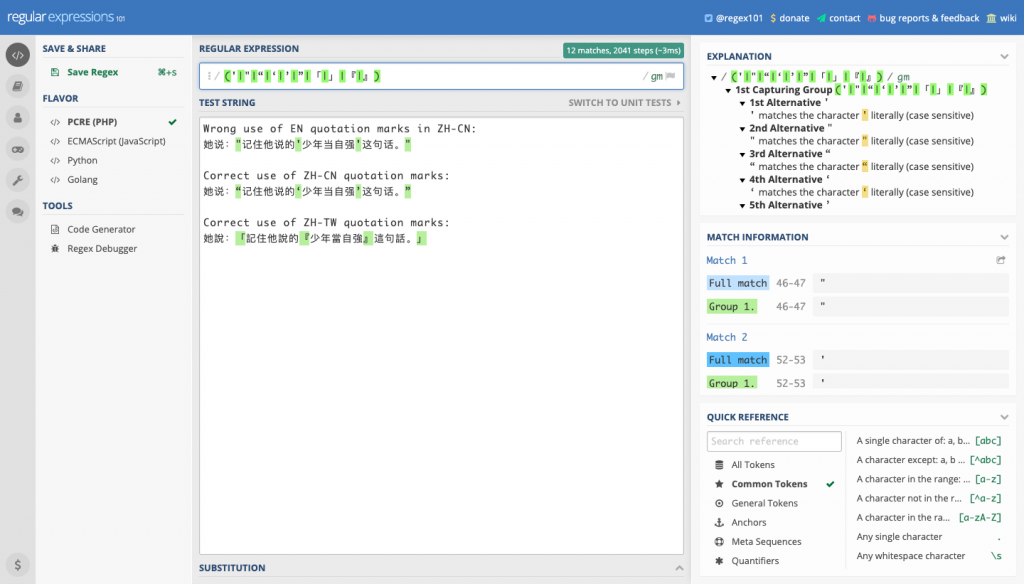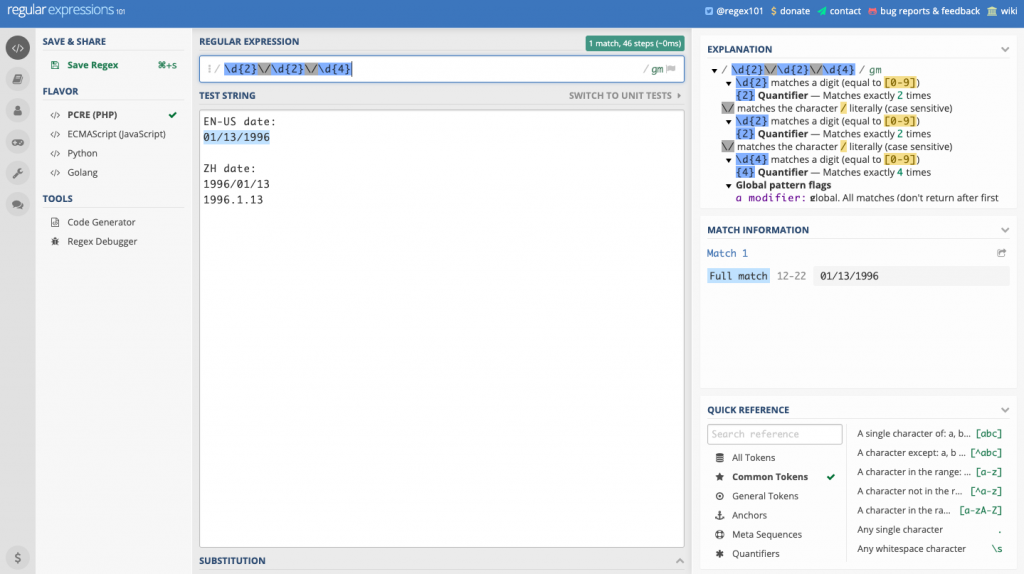Regular expressions (RegEx) are helpful to identify potential translation errors. To translate from English to Chinese, there are simple rules we can apply. Testing was done on two RegEx websites.
Quotation Marks
Simplified Chinese uses western-style quotation marks, but each quotation mark takes the space of one full character. Traditional Chinese uses totally different symbols for quoted speech or emphasis.
EN: “… ‘…’ …”
ZH-CN: “… ‘…’ …”
ZH-TW: 「…『…』…」
RegEx for all types of quotation marks check: (‘|”|“|‘|’|”|「|」|『|』)

Date Format
In American English, dates are formatted with the month first, followed by the day and finally the year, while in Chinese, the date order is completely different. The year comes first, then the month and finally the day. However, in both formats, dates are separated by a forward slash, and sometimes by a dot in Chinese.
EN-US: DD/MM/YYYY
ZH: YYYY/MM/DD
Regex for American date format check: \d{2}\/\d{2}\/\d{4}

General Housekeeping Rules
- No four consecutive full-width punctuation marks in Chinese.
- RegEx to check: \W\W\W\W
- No space before full-width punctuation marks in Chinese.
- RegEx to check: \s\W
- No space between full-width punctuation marks in Chinese.
- RegEx to check: \W\s\W
- Space between a number/ letter and a Chinese character, and vice versa.
- RegEx to check: ([^\w\s]\w|\w[^\w\s])
SDL Trados Studio QA Checker has the option to use RegEx to identify language patterns that may be quality issues. The following are steps.
Project Settings > Verification > QA Checker 3.0 > Regular Expressions

